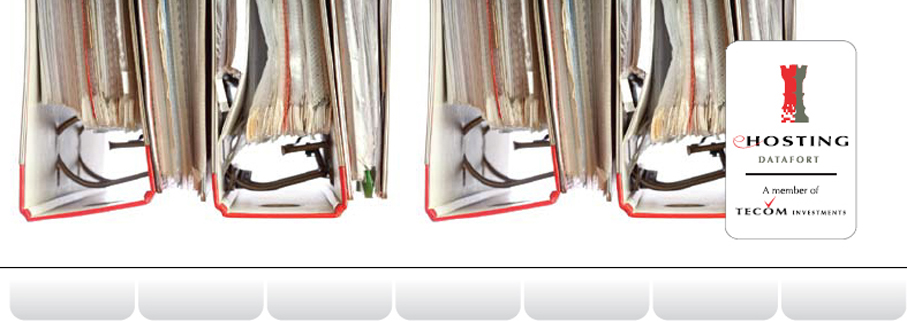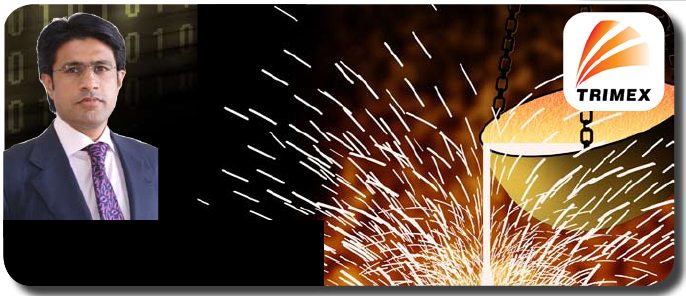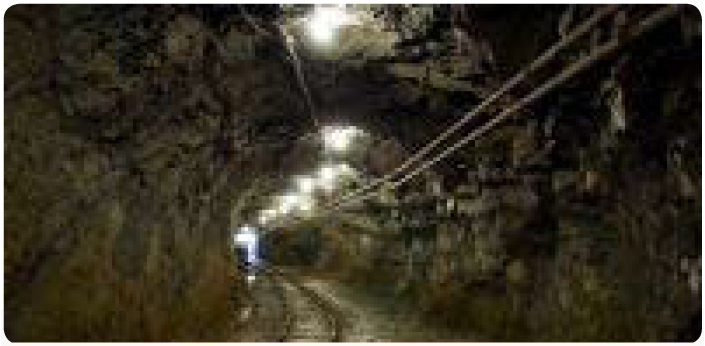

Madhu Koneru
Executive Director, TRIMEX International
Executive Vice Chairman, MEC Holdings
Managing Director RAK Minerals and Metals Investments (RMMI)
With offices scattered across the globe and a burning need to centrally manage their systems, the TRIMEX Group turned to service provider eHosting DataFort to devise an infrastructure solution.
For many regional enterprises, collaboration is often simply a case of picking up the phone. It’s the way things have been done out here for decades and ties into a deep-seated cultural desire to meet face to face and discuss issues – preferably over a cup of tea. But in a world dominated by instant messaging, video conferencing and 24/7 business needs, that approach to running your enterprise is rapidly falling out of fashion. It’s also more difficult when your business grows to encompass offices in several locations around the globe – multiple timezones play havoc with the efficient exchange of information.
This was certainly the challenge facing the TRIMEX group, a mineral conglomerate with offices across Asia, as well as the Middle and Far East. In 2005, the firm identified a need to modernise its existing infrastructure, and create a system which could maximise the sharing of information among employees, suppliers and customers. As a result, it turned to UAE service provider eHosting DataFort (eHDF), which created a new centralised infrastructure incorporating Microsoft Exchange.
As a result, mobile users can now collaborate with each other and access common data stored in eHDF’s datacentre – data which is backed by its managed security and backup and restore services. Madhu Koneru, executive director, TRIMEX International, executive vice chairman, MEC Holdings and MD of RAK Minerals and Metals Investments (RMMI) explains the composition of the TRIMEX group: “It was initially launched to fill the demand supply gap for quality industrial minerals to the oil drilling industry and has since grown into a leading minerals and metals conglomerate with interests in all areas of the minerals supply chain, from mining and logistics to processing and research & development. Starting from UAE and India, TRIMEX now has worldwide locations, which includes Kuwait, Singapore, Indonesia, USA, Hong Kong, China, Malaysia and Thailand.
“The group manages the minerals business through two strategic business units. TRIMEX International, based in Dubai, oversees the international business whereas TRIMEX Industries represents the Indian arm of the Group. TRIMEX International, based in Dubai has a trading arm and two processing plants in the Middle East, one in Kuwait and the other in Ras Al Khaimah. RAK Minerals and Metals Investments (RMMI), also under TRIMEX International, is the result of a strong partnership between RAK Investment Authority (RAKIA), a government of Ras Al Khaimah initiative and the TRIMEX Group,” he elaborates.
In essence, TRIMEX’s plans revolved around three projects. The first, as Koneru explains, was a large scale globalisation project. “This was planned to be implemented in different phases starting with Singapore and Indonesia,” he states.
In creating a centralised solution, mobile devices such as Blackberrys, laptops and PDAs can access the most up to date information through the mail servers located at eHDF’s datacentre.
“The deployment will connect all group offices across the globe through a virtual private network (VPN). The second is an existing service upgrade of hosted infrastructure – this project has already started and will be completed over a two month period by September 2010. This includes the upgrading of exchange servers hosted with eHDF to Microsoft Exchange 2010.
This will ensure end-users can enjoy a more user-friendly experience of using e-mail, enhanced security benefits to prevent data loss risks, reduce spam e-mails and so on. After the upgrade, the CRM system will also be integrated with the new exchange system.” “eHDF is also integrating TRIMEX’s BlackBerry applications with the mail servers so that the end users can enjoy the benefits of the additional features on the go,” he continues.
For Koneru, the major driver behind this project stemmed from the decision taken back in 2005 to upgrade the IT infrastructure. As part of the decision, TRIMEX decided all of its end-users – whether they be customers, suppliers or internal employees – would be connected to a central datacentre which could provide shared services using a single application.
Our selections were based on the background of the vendor. This included the portfolio of clients it is currently handling, and it was important that the vendor had experience working with clients of a similar size and also understood the business requirements we needed.
This was perceived as a significant step up from their earlier system, which involved multiple applications that were selected independently by each outbound office. Koneru lists the criteria he uses to judge the vendors which pitched for the project: “Our selections were based on the background of the vendor. This included the portfolio of clients it is currently handling in our sector. It was important that the vendor had experience working with previous or current clients of a similar size and also understood the business requirements we needed. Pricing was also a factor along with the need of a local support which understood the regional nuances that outsiders may not be aware of.”
In the end, eHDF’s impressive 10-year track record and status as a subsidiary of TECOM lnvestments, formed the basis for its securing the contract. Koneru adds that service levels and high availability were also factors in the decision to use eHDF. Koneru reports that since commencing its partnership with eHDF, TRIMEX has already seen a significant impact on its bottom line. Benefits have included improved business continuity due to the dramatically increased availability, while established virtual private network allows users company-wide to access data.
TRIMEX has also witnessed a significant reduction in the amount of spam it received through the centrally monitored e-mail. “TRIMEX’s upgrade of e-mail software to Microsoft Exchange 2010 will also enable us to benefit from a more efficient mode of communication as well as better security features. In creating a centralised solution, mobile devices such as BlackBerrys, laptops and PDAs can access the most up to date information through the mail servers located at eHDF’s datacentre,” states Koneru.
Decision time
TRIMEX’s Madhu Koneru explains the reasons behind the mining conglomerate’s decision to select eHDF for hosting its infrastructure. “It was very important that we found a partner who was reliable and had experience in implementing similar projects and would become TRIMEX’s main service provider/consultant. We calculated that it was more cost-effective to work with a single service provider a broad range of solutions that could meet our business requirements, and who could offer both local and global support,” he states. “Some of the other factors for choosing eHDF were that it is a fully owned subsidiary of TECOM Investments and has roughly 10 years of experience across industry sectors and has a mature services portfolio. It has also been consistently recognised as a leading service provider in the region,” continues Koneru. “Another important factor for choosing our service provider was their industry leading service level agreements (SLAs) to ensure uninterrupted delivery and optimum performance of IT systems and applications. In working with EHDF, we knew we would be able to access all the resources we needed to move forward in our expansion plans,” he concludes.

“In terms of information management, the collaboration solution allows information to be managed, monitored and surveyed. Not only is this a critical formality in ensuring the safety of the company’s confidential information, but by logging-in and tracking movements of where data travels, information can still be stored securely in a location that is safe and easily retrievable when you want” he continues. Now that the eHDF implementation has proved its worth, Koneru believes that the next round of upgrades will best come from building some additional infrastructure of its own, mainly to support the 3,000 users expected to arrive in the next three years.
“We are planning our own datacentre setup in Singapore which will have direct connectivity to the eHDF datacentre for web service, mail service and disaster recovery,” he suggests.